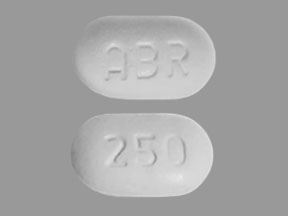Abiraterone Disease Interactions
There are 2 disease interactions with abiraterone.
Abiraterone (applies to abiraterone) hepatic impairment
Major Potential Hazard, Moderate plausibility. Applicable conditions: Liver Disease
Postmarketing studies have associated the use of abiraterone with severe hepatic toxicity, including fulminant hepatitis, acute liver failure and deaths. Serum transaminases and bilirubin levels should be measured before starting treatment and every 2 weeks for the first three months of treatment and then monthly thereafter. Any liver test elevations should prompt more frequently monitoring. Treatment should be discontinued permanently in patients with concurrent elevations of ALT greater than 3 x ULN and total bilirubin greater than 2 x ULN. In patients with baseline moderate hepatic impairment (Child-Pugh Class B), the recommended dose should be reduced to 250 mg once daily. Abiraterone should not be used in patients with severe hepatic impairment (Child-Pugh Class C).
Abiraterone (applies to abiraterone) CVD
Moderate Potential Hazard, Moderate plausibility. Applicable conditions: Cardiovascular Disease, Arrhythmias, History - Myocardial Infarction, Hypokalemia, Fluid Retention
Abiraterone may cause hypertension, hypokalemia and fluid retention as a consequence of increased mineralocorticoid levels resulting from CYP17 inhibition. Use caution when treating patients whose underlying medical conditions might be compromised by increases in blood pressure, hypokalemia or fluid retention such as patients with heart failure, recent myocardial infarction, ventricular arrhythmias. Use with caution in patients with cardiovascular disease and monitor regularly.
Switch to professional interaction data
Abiraterone drug interactions
There are 425 drug interactions with abiraterone.
Abiraterone alcohol/food interactions
There is 1 alcohol/food interaction with abiraterone.
More about abiraterone
- abiraterone consumer information
- Check interactions
- Compare alternatives
- Pricing & coupons
- Reviews (44)
- Drug images
- Side effects
- Dosage information
- During pregnancy
- Drug class: miscellaneous antineoplastics
- En español
Related treatment guides
Drug Interaction Classification
| Highly clinically significant. Avoid combinations; the risk of the interaction outweighs the benefit. | |
| Moderately clinically significant. Usually avoid combinations; use it only under special circumstances. | |
| Minimally clinically significant. Minimize risk; assess risk and consider an alternative drug, take steps to circumvent the interaction risk and/or institute a monitoring plan. | |
| No interaction information available. |
See also:
Further information
Always consult your healthcare provider to ensure the information displayed on this page applies to your personal circumstances.


